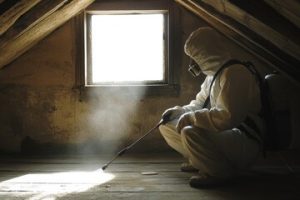Signs You Need Expert Mice Control Solutions
A professional pest control company will help prevent mice infestations through thorough inspections, proper sealing of entry points, and general home maintenance like cleaning up food scraps, storing items in airtight containers, and trimming overgrown trees and plants. You can also help by keeping pets and other animals away from areas of the house where mice might enter. Professional Rodent Retreat experts can fix the issue quickly to prevent further damage.

Seeing Mouse Droppings
Mouse droppings are a clear sign of a rodent infestation, and it’s important to note that mice can leave 50-75 pellets a day. They resemble dark grains of rice with pointed ends and have a shiny appearance when fresh, while older droppings become dry and crumbly. The most common areas to find mouse feces are food storage areas, attics and crawl spaces, cabinets around appliances like water heaters, and closets.
It’s also important to differentiate mouse droppings from rat or cockroach droppings, as these can often be mistaken for each other. The best way to identify mouse droppings is by examining their physical characteristics, as well as other signs of rodent activity, such as gnaw marks on wires and furniture, or hearing scratching noises at night.
Mice are nocturnal and good at hiding, which is why it’s often hard to spot them in the house. However, you may hear squeaking or scratching sounds in the walls and ceilings, especially at night.
Seeing or hearing these signs can be a clear indication that it’s time to contact us for mouse control. While DIY traps and natural repellents can sometimes work for small infestations, they aren’t nearly as effective as a professional mouse removal service that includes thorough inspections, customized treatments, and preventative solutions. Contact us today to schedule your free inspection!
Seeing Mouse Nests
Mice are skilled at hiding and nesting in dark and secluded areas of your home, such as wall cavities, attics, and behind appliances. Seeing mouse nests or finding evidence of mice activity can indicate a serious infestation that needs professional attention.
Mice can leave anywhere from 50 to 80 droppings each day, so finding large mounds of droppings in various places in your home is a big sign of a problem. These tiny pellets are black and are similar in size to a grain of rice. They also leave behind urine stains, so if you see urine spots on your floors or furniture, you may have a rodent problem.
Other signs of mouse activity include gnaw marks on food packaging, cardboard boxes, wood, and other items. As they chew these materials and others, mice may cause damage to pipes, electrical wiring, and other household items. They also have an insatiable desire to chew, as their teeth never stop growing.
You might also hear scratching and scurrying noises in your walls or ceilings, particularly at night. These sounds are usually caused by mice making nests in these dark, secluded spaces. Shredded paper, fabric, and insulation are common materials used in mice nests. Also look for greasy smudge trails on baseboards or along walls where mice have been traveling on regular routes, often along with gnaw marks and droppings.
Seeing Mouse Sightings
Mice are small and agile, able to squeeze through the tiniest cracks and holes in your home’s walls, floors, or even plumbing. Their inquisitive nature and opportunistic behavior allow them to take up residence anywhere they find food, shelter, and water, including your pantry, kitchen cabinets, tucked-away crawl spaces, basements, attics, or laundry rooms.
While a single mouse sighting does not necessarily indicate a serious infestation, multiple sightings, especially during the day, can be a sign of a larger problem. This is because mice are nocturnal and tend to hide during the day, allowing their populations to build up undetected.
Other signs of mice infestation include droppings, urine stains, gnawed containers, and a musty or ammonia-like smell. You may also notice scratching noises in the walls, especially at night. Our state-certified pest specialists can help you identify potential entry points for mice, seal them, and provide effective mice control solutions.
Since mice are opportunistic, they are likely to invade your home when conditions are favorable for them, regardless of whether or not there is an immediate need for shelter and food. They are known to gnaw on wires, insulation, and wood, causing damage to your property and creating fire hazards. They also pose a health threat to your family, carrying dangerous diseases like hantavirus and leptospirosis, and can trigger allergies and asthma symptoms in some people.
Finding Mouse Gnaw Marks
Mice need to gnaw on hard surfaces to control the growth of their teeth, which can lead them to chew through several materials in your home, including electrical wires, cardboard, and wood. Check your cupboards and along skirting boards for signs of nibble marks, which look like shallow grooves that run parallel with the wall. Also, check the eaves of your roof for gnawed material that could indicate mice are nesting in these cosy spots.
If you hear scrabbling noises or squeaks in the walls and ceilings at night, you could have a mouse infestation. Mice are nocturnal, and if you hear their scratching sounds, they’re likely trying to gain access to food in your cupboards and elsewhere.
Hissing is another sign of a mouse problem. Mice hiss to mark territory, communicate with other mice, and as a defence mechanism against predators.
Mice can gain entry into your home through several gaps and holes, which they create to shelter, hunt for food, and find new places to build their nests. Check in garages, sheds, and gardens for gaps in walls or fences, holes gnawed in the base of wooden doors, and overgrown vegetation that may serve as a bridge to your property. Also, look for gnawed or chewed items such as perforated food packaging and shredded fabrics such as woollen scarves and lace tablecloths.